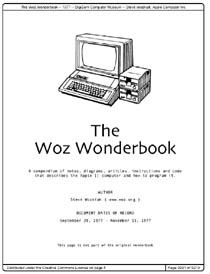Herman H. Goldstine: The Computer from Pascal to von Neumann (1972/1993)
Filed under book | Tags: · computing, history of computing, history of technology, technology

In 1942, Lt. Herman H. Goldstine, a former mathematics professor, was stationed at the Moore School of Electrical Engineering at the University of Pennsylvania. It was there that he assisted in the creation of the ENIAC, the first electronic digital computer. The ENIAC was operational in 1945, but plans for a new computer were already underway. The principal source of ideas for the new computer was John von Neumann, who became Goldstine’s chief collaborator. Together they developed EDVAC, successor to ENIAC. After World War II, at the Institute for Advanced Study, they built what was to become the prototype of the present-day computer. Herman Goldstine writes as both historian and scientist in this first examination of the development of computing machinery, from the seventeenth century through the early 1950s. His personal involvement lends a special authenticity to his narrative, as he sprinkles anecdotes and stories liberally through his text.
Publisher Princeton University Press, 1993
ISBN 0691023670, 9780691023670
PDF (no OCR; updated on 2012-7-25)
Comment (1)Steve Wozniak: The Woz Wonderbook (1977)
Filed under brochure | Tags: · 1970s, computing, history of computing, history of technology, technology

The “Woz Wonderbook” was a compilation of notes from Steve Wozniak’s filing cabinet that served as the first documentation and technical support manual for the Apple II computer (before the more famous “red book” of January 1978).
A copy donated to DigiBarn Computer Museum by Bill Goldberg, longtime Apple employee.
Scanned by David Craig.
Available in Creative Commons License permitting noncommercial use with share-alike.
PDF (added on 2014-3-6)
PDF (Alt link)
Alex Roland, Philip Shiman: Strategic Computing: DARPA and the Quest for Machine Intelligence, 1983-1993 (2002)
Filed under book | Tags: · 1980s, arpanet, artificial intelligence, computing, expert systems, history of computing, history of technology, technology

“This is the story of an extraordinary effort by the U.S. Department of Defense to hasten the advent of “machines that think.” From 1983 to 1993, the Defense Advanced Research Projects Agency (DARPA) spent an extra $1 billion on computer research aimed at achieving artificial intelligence. The Strategic Computing Initiative (SCI) was conceived as an integrated plan to promote computer chip design and manufacture, computer architecture, and artificial intelligence software. What distinguished SCI from other large-scale technology programs was that it self-consciously set out to advance an entire research front. The SCI succeeded in fostering significant technological successes, even though it never achieved machine intelligence. The goal provided a powerful organizing principle for a suite of related research programs, but it did not solve the problem of coordinating these programs. In retrospect, it is hard to see how it could have.
In Strategic Computing, Alex Roland and Philip Shiman uncover the roles played in the SCI by technology, individuals, and social and political forces. They explore DARPA culture, especially the information processing culture within the agency, and they evaluate the SCI’s accomplishments and set them in the context of overall computer development during this period. Their book is an important contribution to our understanding of the complex sources of contemporary computing.”
Keywords and phrases
DARPA, expert systems, Teknowledge, Connection Machine, Shiman, Robert Kahn, supercomputers, ARPA, IntelliCorp, Artificial Intelligence, Lynn Conway, VLSI, ARPANET, Alex Roland, U.S. Congress, Saul Amarel, CPSR, George Heilmeier, Xerox PARC, Craig Fields
Publisher MIT Press, 2002
ISBN 0262182262, 9780262182263
427 pages
PDF (updated on 2012-7-25)
Comment (1)
